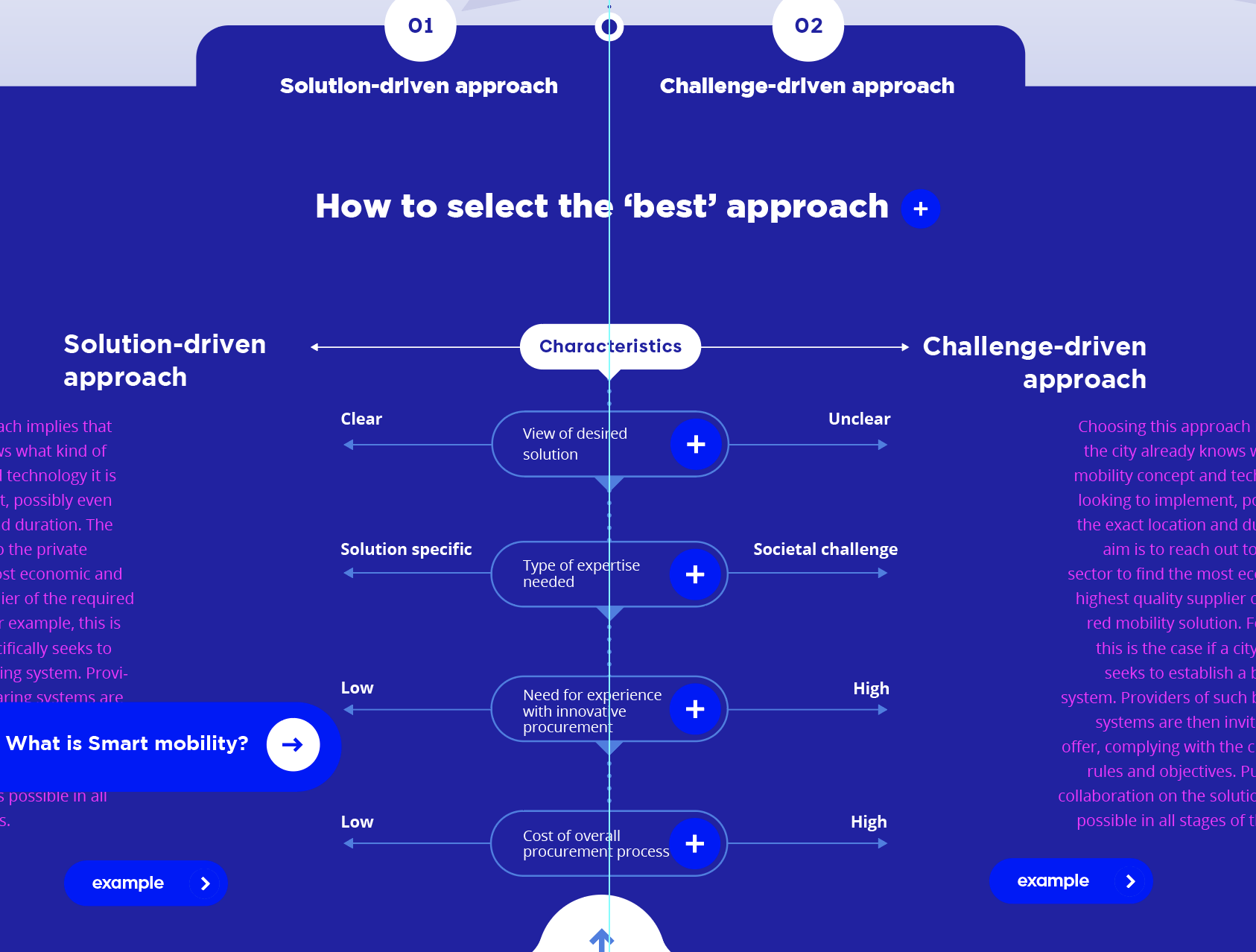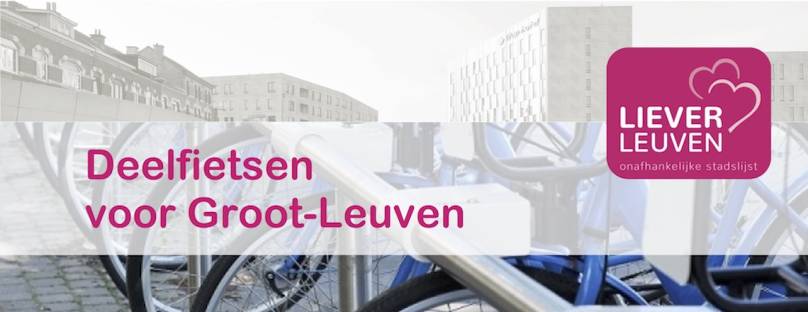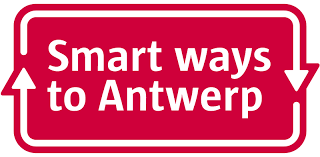
Before implementing new shared mobility solutions, cities need to be aware and reflect on the two main approaches that are used as starting points to identify and select an adequate procurement process.

scroll down












View of desired solution



Need for expertise



Need for experience with innovative procurement



Cost of overall procurement process


Solution driven approach: The city already knows what kind of mobility solution it aims to implement, possibly even the exact location and duration. The aim is to reach out to the private sector to find the most economic and highest quality supplier of the required mobility solution.
Challenge-driven approach: The city attempts to solve a broader urban mobility challenge while being technology-neutral. This means that it is initially unknown what exact mobility solution (bike-sharing, carsharing, etc) would be the most suitable solution. The objective here is to co-design optimal mobility solutions with the active collaboration of the private sector.







Before implementing new shared mobility solutions, cities need to be aware and reflect on the two main approaches that are used as starting points to identify and select an adequate procurement process.










Solution driven approach: The city already knows what kind of mobility solution it aims to implement, possibly even the exact location and duration. The aim is to reach out to the private sector to find the most economic and highest quality supplier of the required mobility solution.
Challenge-driven approach: The city attempts to solve a broader urban mobility challenge while being technology-neutral. This means that it is initially unknown what exact mobility solution (bike-sharing, carsharing, etc) would be the most suitable solution. The objective here is to co-design optimal mobility solutions with the active collaboration of the private sector.
A solution-driven approach works best when the local authority has a clear picture of the solutions in the market. The collaboration between the city and a private mobility provider is based on clearly defined agreements on a specific service to be provided, often concerning pricing and service levels.
A challenge-driven approach requires both the market and the city to actively work on how to solve a certain urban mobility challenge. Such an approach will lead to partnerships with several different stakeholders involved, all of which with complementary roles and responsibilities that contribute to the solution. However, formulating and following up on KPI's is not self-evident and proving impact often requires an extra administrative burden. It is also very important that the local government can create a clear picture of the actual challenge and communicate it well with the market.


Need for experience with innovative procurement



Cost of overall procurement process



View of desired solution

specific
challenge


Type of expertise needed




















